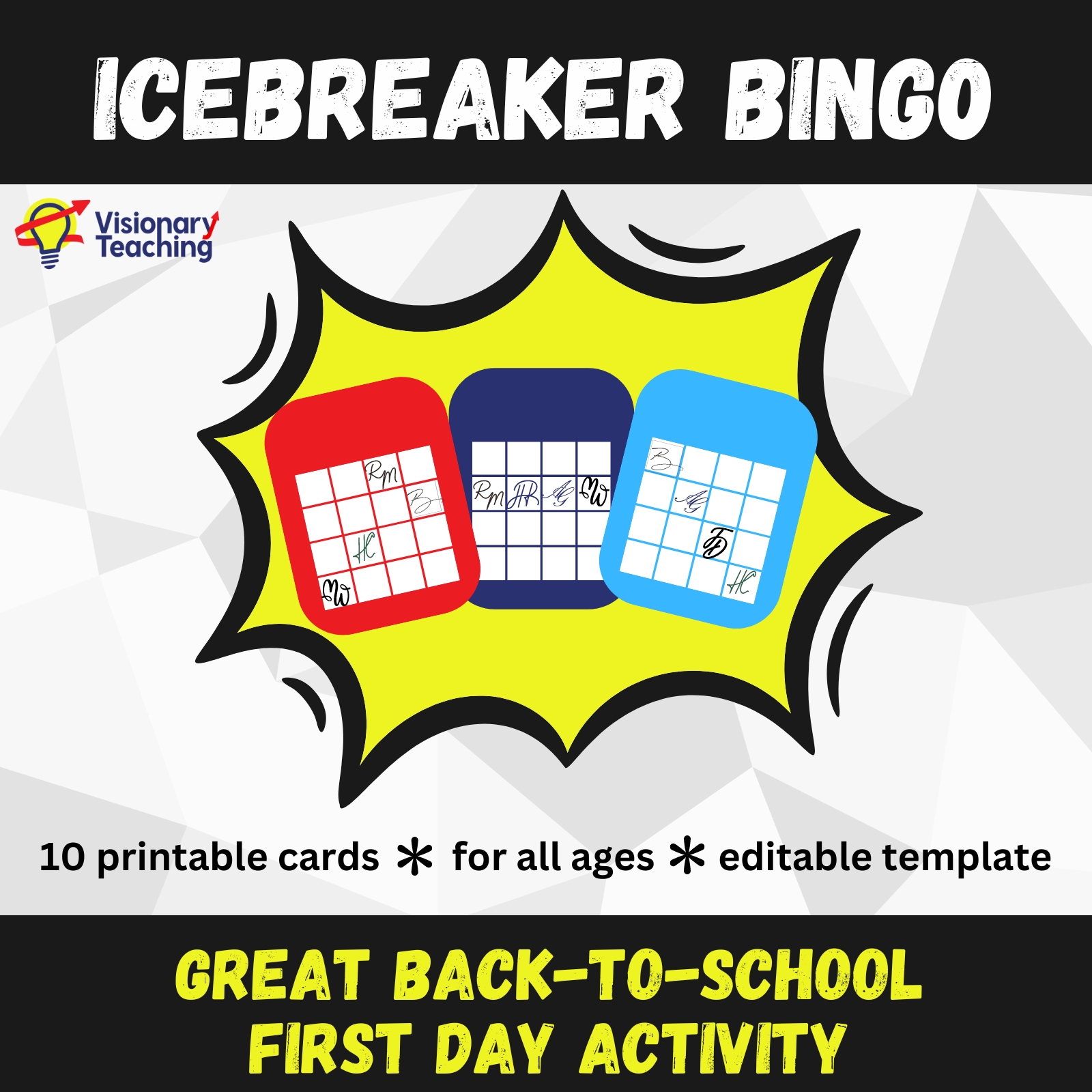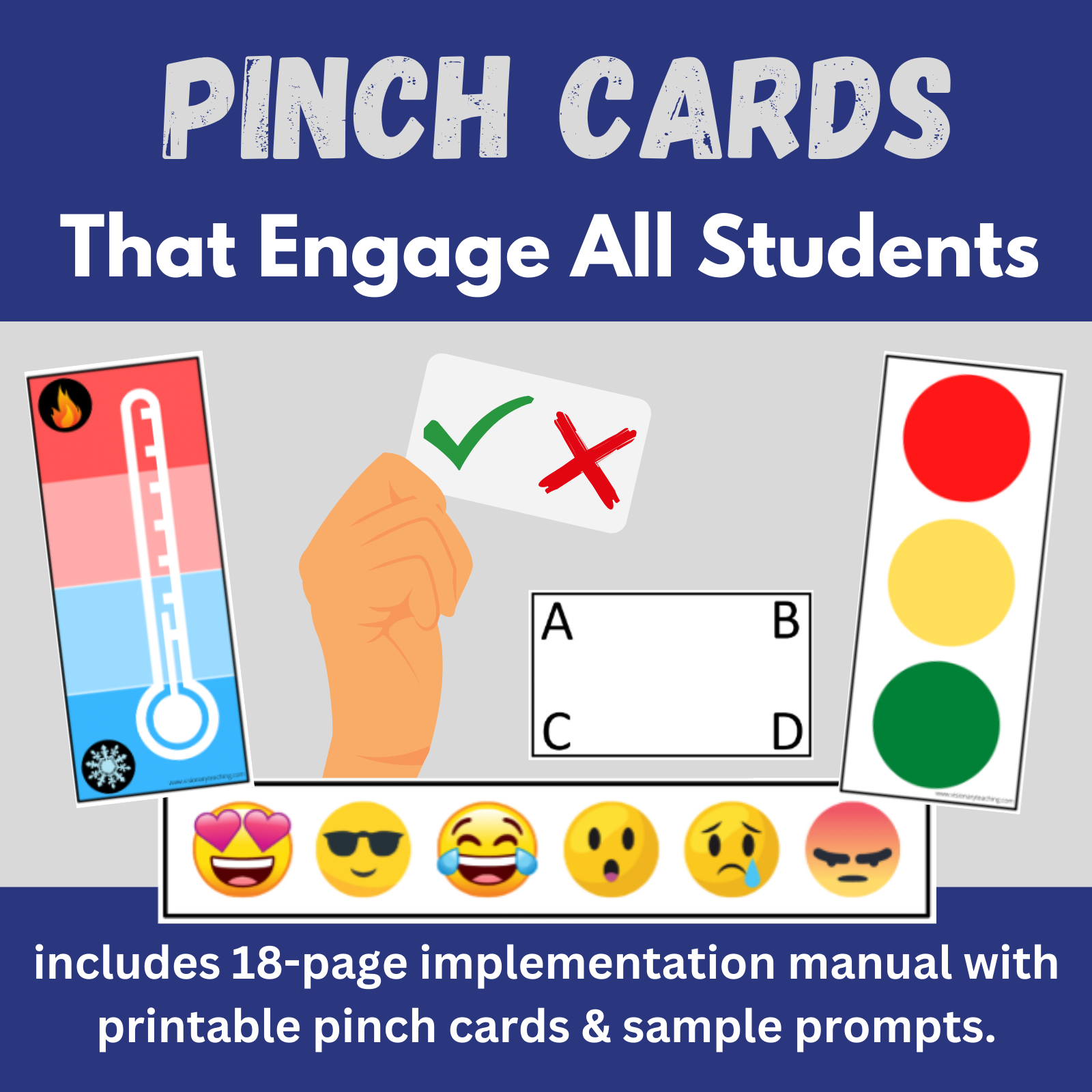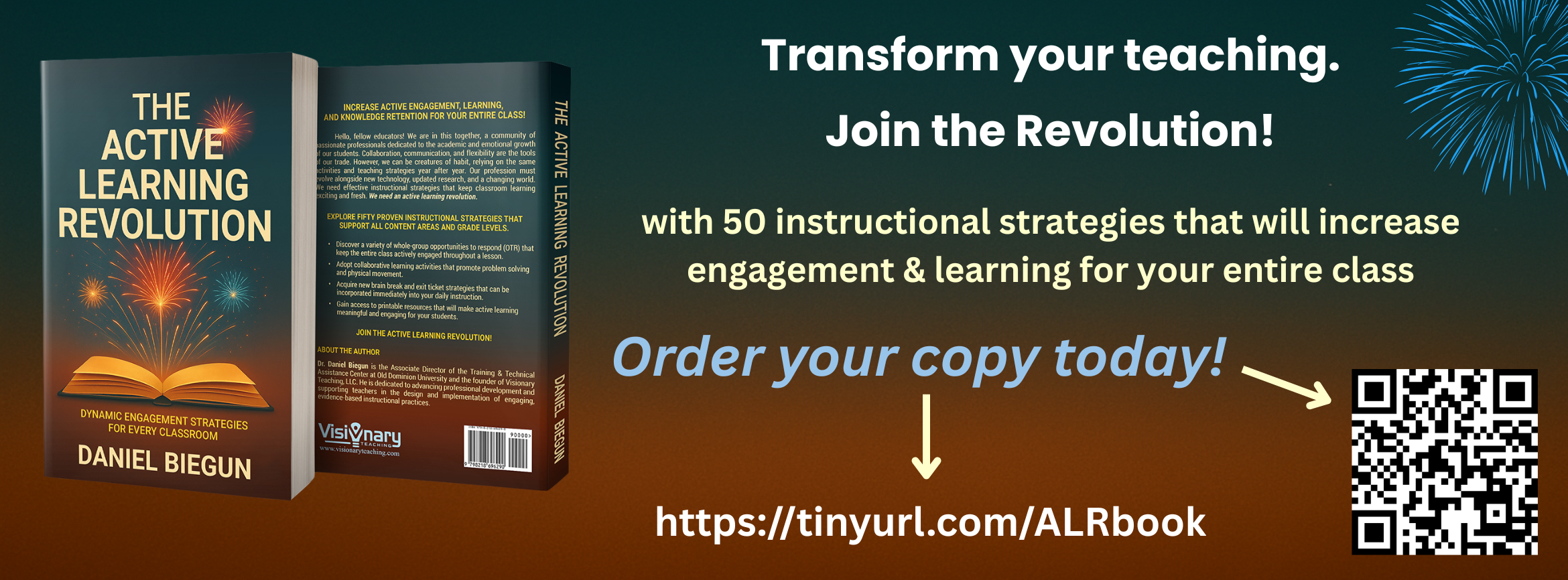
Welcome to the second part on our series of Universal Design for Learning (UDL). Think of this post as a hub for all of the great UDL-content that Visionary Teaching will share.
We previously explored the origins of UDL and why it is important for all teachers and students.
UDL has 3 brain networks:
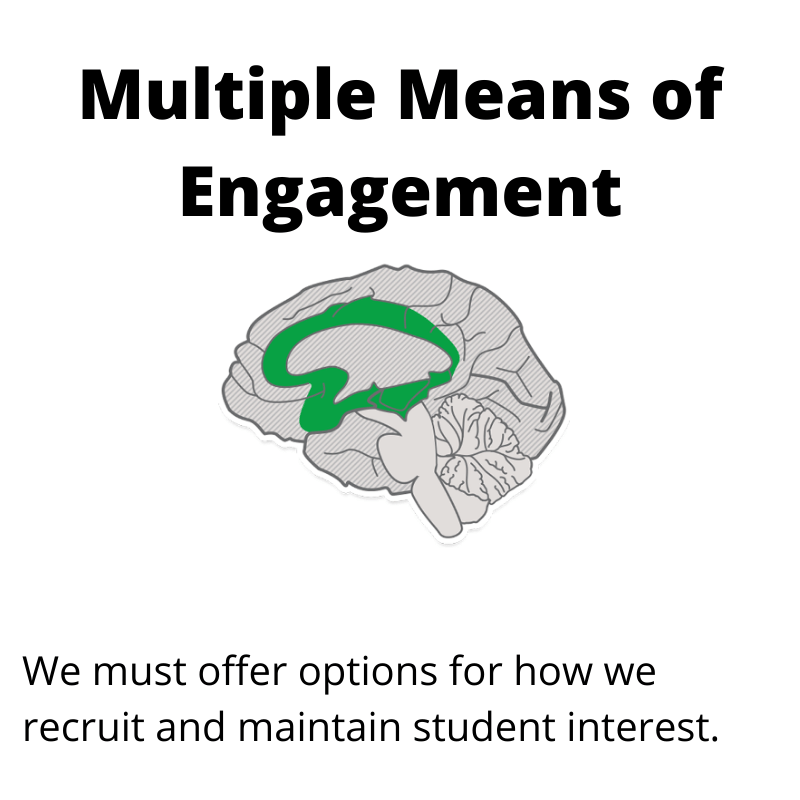
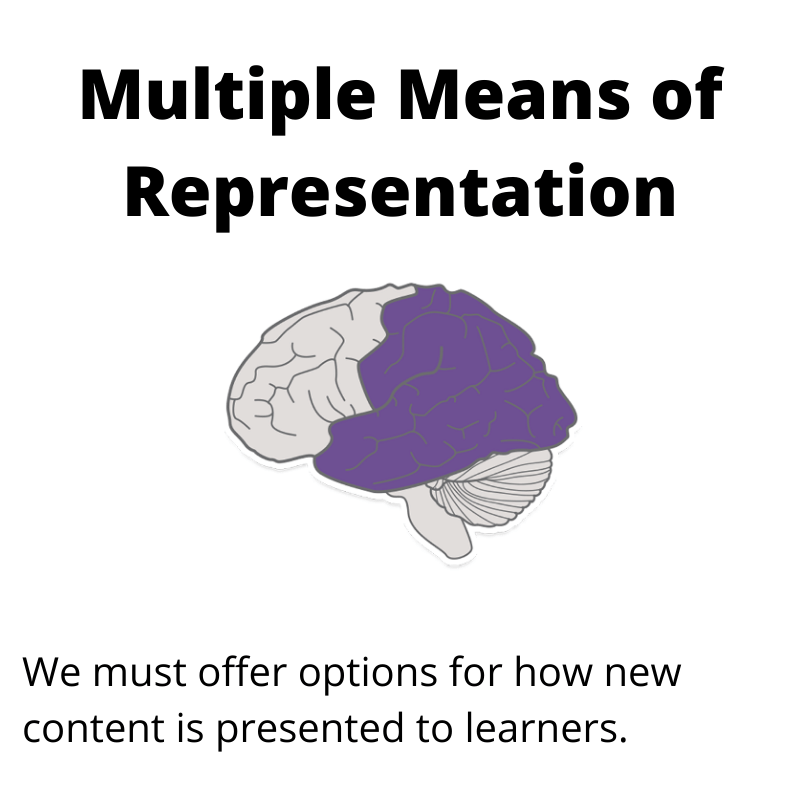
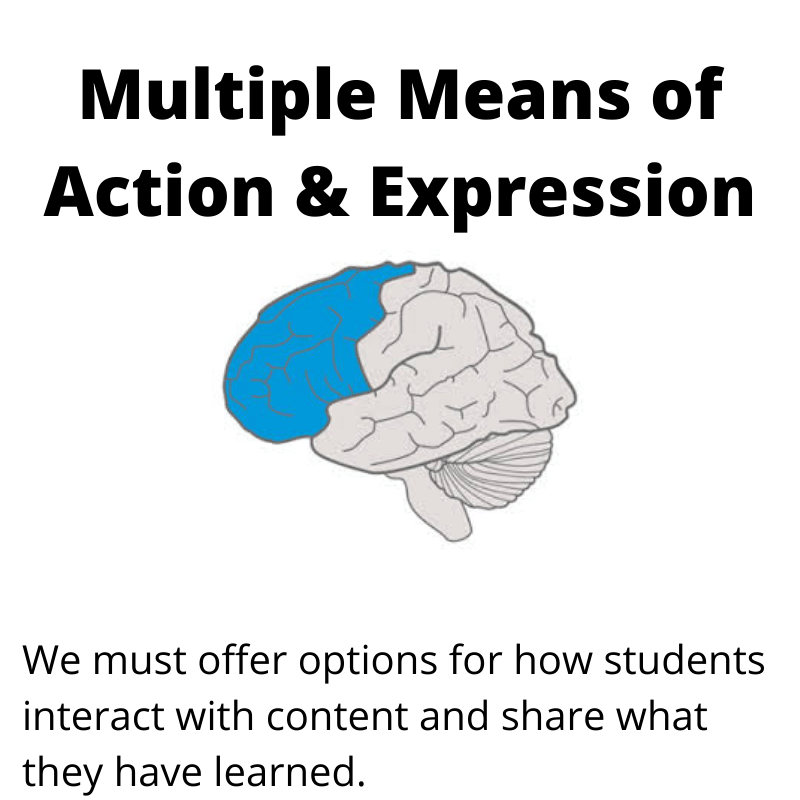
The Importance of Variety & Options
Every learner represents a unique blend of strengths, interests, experiences, and preferences. As teachers, we often tend to teach to our own strengths and preferences. We must account for student variance and plan instruction that gives all learners an equitable opportunity to be successful.
Providing variety in how we engage, teach, and assess enables students to identify their learning strengths and preferences. When students have a choice in how they take in new information and share what they have learned, they are more likely to be successful.
Below, we will expound on the 3 brain networks and offer strategies and activities to help you engage, inspire, and teach your diverse group of learners.
Multiple Means of Engagement
It doesn’t matter how smart we are as teachers. If our students aren’t paying attention to us, they aren’t learning.
By providing multiple means of engagement, we increase the likelihood that all students are excited and motivated to learn. We can gain students’ interest and maintain their focus for longer periods of time. Here are the student engagement strategies that we will cover during this series:
- Active engagement vs. on-task behavior
- What influences student affect?
- Tips for recruiting student interest
- Sustaining effort & persistence
- Brain breaks
- Engagement through novelty & variety
- Meaningful assignments
- Leveraging technology
- Options for group work
- Giving instructive feedback
- Respecting diversity

Multiple Means of Action & Expression
“Tell me and I will forget, show me and I may remember; involve me and I will understand.”
Confucius was right! We must understand that students differ in how they prefer to interact with new content and share what has been learned.
By providing multiple means of action and expression, we ensure that each student has a fair chance to connect with learnings and demonstrate mastery. For example, some learners do well with tests and quizzes, while others thrive on project-based work. Here are some related ideas to consider:
- Choice boards
- Opportunities to respond
- Replicating conditions
- Self-monitoring progress
- Tools for virtual instruction
- Pause procedure
- Multiple media for communication
- Formative vs. summative assessment
- Exit tickets

Multiple Means of Representation
The job of a teacher is to communicate new information to students. With an understanding that individuals differ in how they take in and process new information, it is important to present content in a variety of ways.
By providing multiple means of representation, we increase the likelihood that all students are able to perceive and comprehend what we teach. We can eliminate or reduce barriers to learning. Here are the teaching strategies that we will cover during this series:
- Visual, auditory, & kinesthetic options
- Teaching on Zoom
- Use multiple media
- Activate/build background knowledge
- Embrace multi-sensory instruction
- Customize the display of information
- Generalize content to real-world

Universal Design for Learning is a broad and powerful framework. Bookmark this page and check back often as we hyperlink new content to the 3 brain networks above.
Happy teaching!
[mailerlite_form form_id=4]

